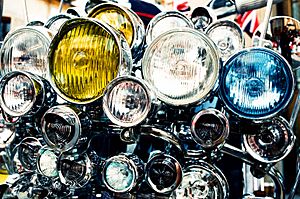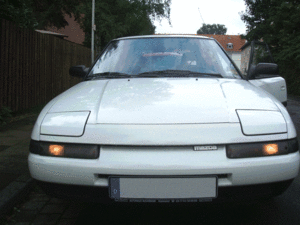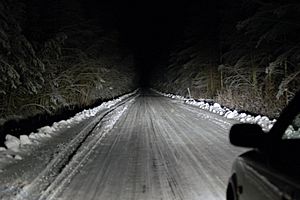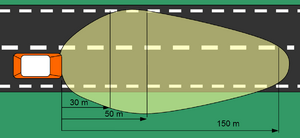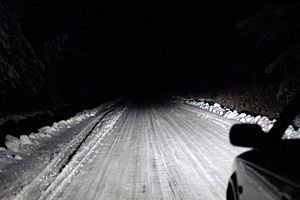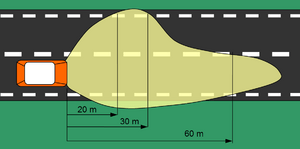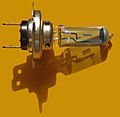Headlamp facts for kids
Headlamps are super important lights on the front of vehicles, usually cars. They shine brightly forward, helping drivers see the road, especially at night or in bad weather. This stops them from hitting things like trees or other cars! Most headlamps use special light bulbs, like incandescent or halogen bulbs.
Contents
How Car Headlamps Work
Cars today have electric headlamps. They usually come in pairs, one or two on each side of the car's front. These lights can do two main things: provide a 'low beam' or a 'high beam'. Sometimes one light does both jobs, and sometimes there are separate lights for each.
High Beams: Seeing Far Ahead
High beams, also called "main beams" or "full beams," send most of their light straight ahead. This helps drivers see as far as possible down the road. They are super bright! But because they are so bright and shine straight out, they can really dazzle (blind for a moment) other drivers. This is why you should only use high beams when no other cars are around. High beams can also make it harder to see in fog, rain, or snow because the light bounces back from the water droplets.
Low Beams: Being Polite on the Road
Low beams, also called "dipped beams," are designed to be much more controlled. They direct most of their light downwards and to the side (either right or left, depending on where you drive). This helps the driver see the road without blinding people in oncoming cars. You should always use your low beams when other vehicles are nearby.
Driving on Different Sides of the Road
Most low-beam headlamps are made for driving on only one side of the road.
- In countries where people drive on the left side of the road (like the UK or Australia), headlamps "dip to the left." This means the light shines down and a bit to the left. It helps the driver see the road and signs without blinding cars coming the other way.
- In countries where people drive on the right side of the road (like the USA or most of Europe), headlamps "dip to the right." The light shines down and a bit to the right.
If you drive a car from a "right-side" country in a "left-side" country (or vice versa) for a short time, like on vacation, you might need to adjust your headlamps. You can put special stickers on them to block the light that would dazzle oncoming drivers. Some newer headlamps can be adjusted with a switch or lever. It's important to do this because wrong-side headlamps can be dangerous for other drivers and don't light your way properly.
Lights for Daytime Driving
Some countries require cars to have special lights that turn on automatically during the day. These are called daytime running lamps (DRL). They make cars easier to see during the day, which helps prevent accidents. DRLs can be your regular low beams at full or lower brightness, or even high beams at a lower brightness. Some cars have special lights just for DRLs.
Countries that require DRLs include Canada, Sweden, Finland, Norway, and many others in Europe like Estonia, Latvia, and Poland.
Related pages
Images for kids
See also
 In Spanish: Faro (vehículo) para niños
In Spanish: Faro (vehículo) para niños


